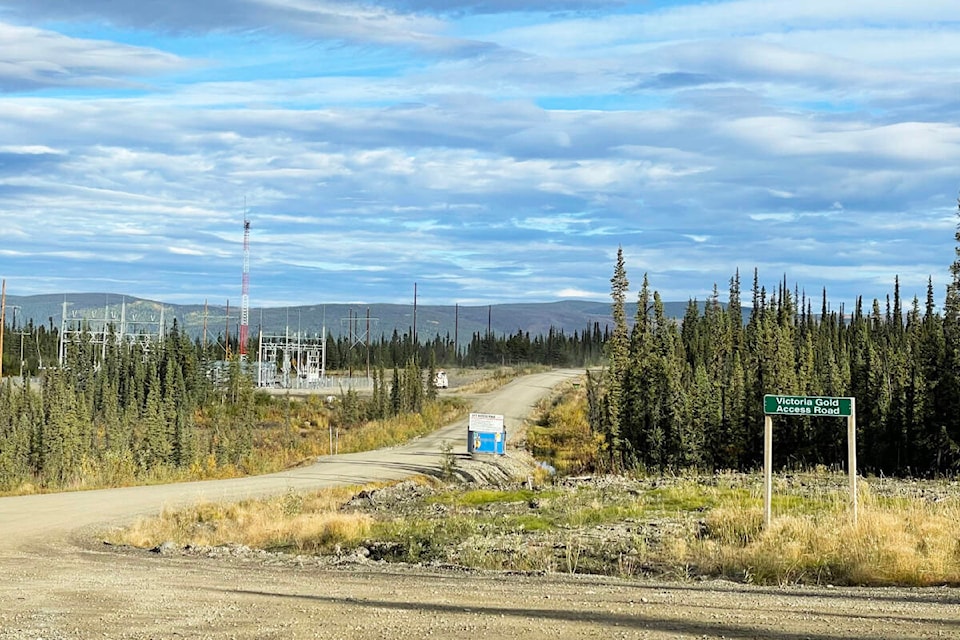Two Yukon mining companies are facing increased security deposits with short timelines to come into compliance this year.
The Minto mine and Victoria Gold Corporation’s (VGC) mine, located north of Carmacks and near Mayo respectively, were both required to submit updated reclamation and closure plans in 2020 as required by their quartz mining and water licences.
These plans are required every two years. It was these plans and subsequent review processes that resulted in substantial increases in the amount of security required in 2022 for each of the two mines.
The Yukon government increased Minto’s security deposit by approximately $32 million, up from $72 to $104 million. The company missed the deadline of April 5 to pay the balance owing.
The Yukon Water Board increased Victoria Gold’s security deposit by approximately $74 million, up from $30.7 million to $104.9 million. Victoria Gold has a deadline of Sept. 15 to pay the balance.
Minto, after discussions with the Yukon government, now has until Sept. 1 to come into compliance.
“Until then, Minto has been placed in restricted operating conditions and is required to remain on site to ensure environmental liabilities are reduced,” said a spokesperson for the Yukon’s department of Energy, Mines and Resources said in an email to the News on July 5.
Victoria Gold’s reclamation and closure plan from 2020 was reviewed by a newly piloted process that involved both regulators and potentially the participation of the company. Victoria Gold declined to meet with the regulators in January, and the process continued. Ultimately, their plan was not approved and their security deposit was increased.
Victoria Gold’s reclamation and closure plan
There were two reasons cited in the water board’s document regarding the non-approval of Victoria Gold’s reclamation plan. One pertained to the water treatment processes and the second to concerns regarding slope contouring.
The board found Victoria Gold’s plan didn’t include one of the required water treatment methods.
The board noted that Victoria Gold had been licensed with the expectation that both active water treatment and in-heap biological detoxification processes would be used to treat the cyanide-laced water.
The board noted that the submitted plan did not include any in-heap biological processes. The report states that “if VGC wants to remove that from its mine plan, VGC will be required to obtain an amendment to the quartz licence.” The board was quite clear that the reclamation plan is not a substitute for an amendment to the licence.
The board determined that by omitting in-heap biological treatment, the reclamation plan is not complete and Victoria Gold has made a substantial change to its licence approval.
The board also found the company non-compliant with their water licence in that the re-contouring plans for the heap leach facility and waste rock storage areas were not submitted as requested, and that they had given the company several years to provide them.
It appears that the board is “extremely concerned” about the lack of studies regarding the contour of the slopes and designated snow removal locations.
Security review flags shortfalls
The security sections of the water board’s report cite unrealistic inflation estimations, under-represented liabilities and calculation errors as the main reasons for the additional security costs.
The company had used a two-per-cent inflation figure which was said to be appropriate in 2020, but given current circumstances it was deemed insufficient in 2022.
In their decision “the board determines that inflation will be calculated for the first two years using the Bank of Canada’s inflation calculator (a cumulative total of 9 per cent), followed by a return to long-term targets of 2 per cent for the next two years, totalling a four-year inflation factor of 13 per cent. As a result, the board determines an additional $3,561,672 of security is required.”
The following pages show a mix of contingency estimates being upped from 20 to 30 per cent in some areas, to additional requirements, such as the cost of a treatment system design replacement liner.
The board determined that the pond for the constructed wetland treatment system needed to be enlarged and would require an additional $2 million.
Another expense item pertained to the biological detoxification system and the sugar required for it. Those two items totalled just under $8 million, as their presence was required as part of their existing licence.
Consequences for non-payment
Energy, Mines and Resources said that “licencees can submit updates, and additional information, to the board for consideration through the review and approval process.”
Regarding the Minto site, the representative stated that the “Yukon government is closely monitoring the environmental liabilities and has the authority to place the site in a state of temporary closure should environmen- tal or financial liabilities increase.”
The Yukon’s Mineral Development Strategy calls for improved and appropriate mechanisms to assist regulators when security is not furnished.
Both Minto and Victoria Gold are scheduled to submit another reclamation and closure plan for security review later this year.
— With files from Jim Elliot
READ MORE: Yukon government restricts Minto Mine’s operations until cleanup security paid
Contact Lawrie Crawford at lawrie.crawford@yukon-news.com
